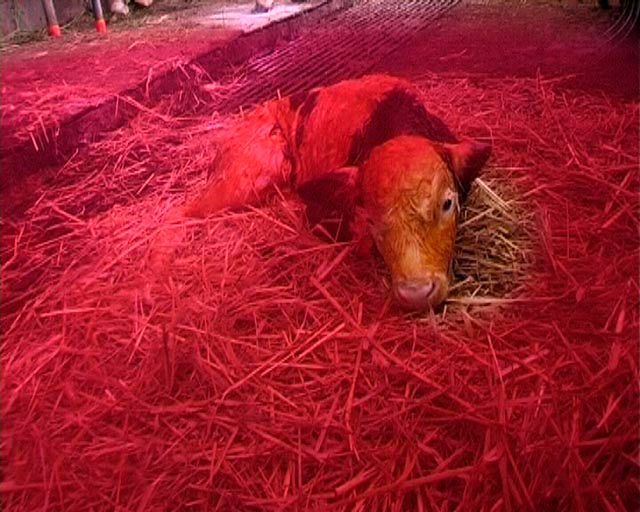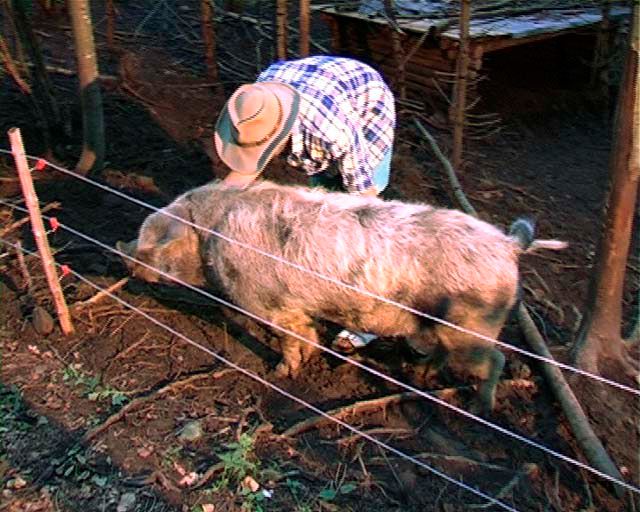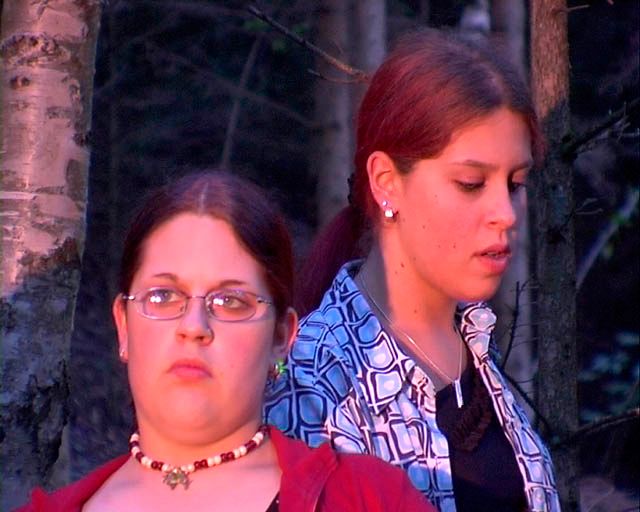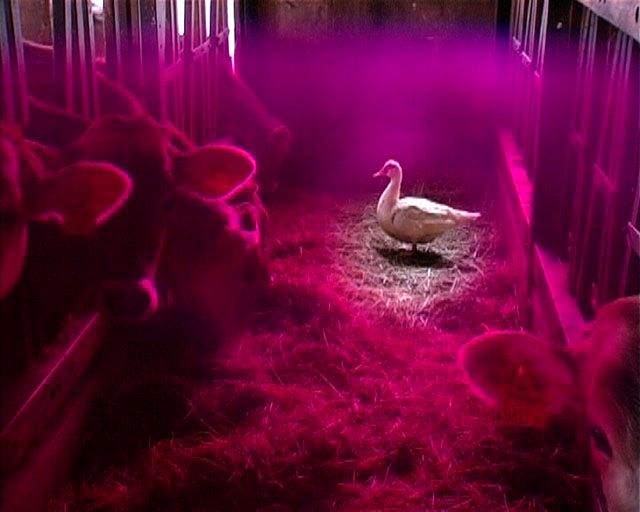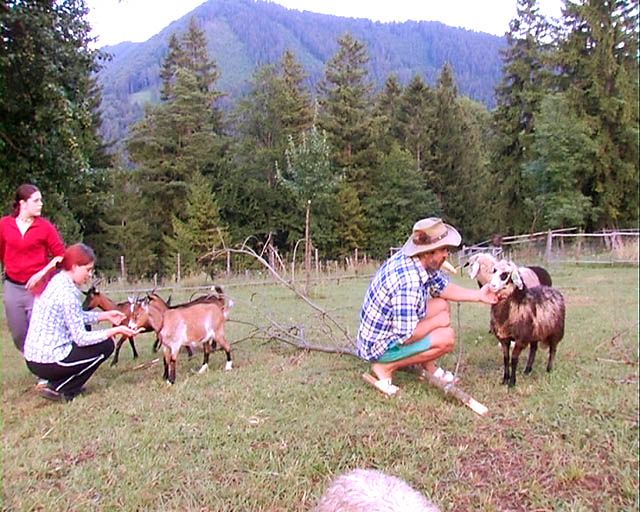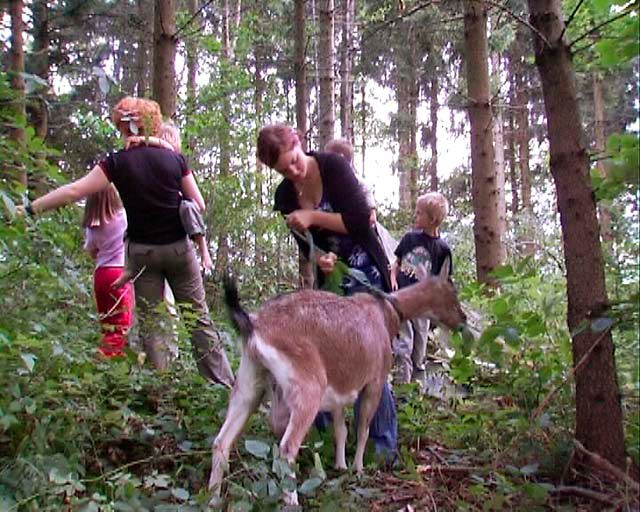Beautiful Views
BackArtists
- With
Information
The projects 'Gemeinsame Sache' (Common Cause, 1999) and 'Gemischte Gefühle' (Mixed Feelings, 2001) were essentially designed to address the community of Reinsberg and its history, stories and people in the course of a longer stay there, and to integrate them into the production and presentation of a locally-orientated artistic project. In the case of 'Schöne Aussichten' (Beautiful Views), which followed in 2004, the emphasis was on the media presence of the village of Reinsberg and the way it has changed through being reflected in the media. A rural Lower Austrian community, Reinsberg is a location for modern architecture (the Burgarena), a setting for performances (theatrical and opera productions), a film set, a venue for events, a tourist destination, mountain biking terrain with beach volleyball and organic farming, and last but not least a location for art on the Iron Route. Great significance has been attached to retaining the well-known rural attributes in the process. These include houses with flower boxes, traditional costumes, old customs, local folk music and church festivals constitute the superficial life of this well-organised community. It is a place that has, since its inhabitants have mobile phones, access to the Internet, cable TV, a knowledge of the criteria for EU subsidies etc., has at its disposal the same amount of meaningful and meaningless information as any urban community.
In the preliminary work for 'Schöne Aussichten' it was a matter both of investigating 'authentic' Reinsberg in order to elucidate the production of 'new' images and identities, and of creating identities and myths for the future. Video (with an openness to photography and film) was chosen as a way of introducing a connective medium that afforded both formal access and employed documentary methods. The focus was on participatory practices, on the inclusion of the people of Reinsberg in the production and presentation of the art project. The presentation was held on 28 August 2004 in what was formerly the Gruber supermarket, in the village hall, on public squares and at the sports ground. It was comprised of several projections, a performance and a photography exhibition. The videos subsequently remained on view at several local inns and at the Burgarena.
Contributors
- Kuration
Contributions
Iris Andraschek, Hubert Lobnig
Iris Andraschek and Hubert Lobnig asked for protagonists and storylines for a possible Reinsberg television series. The recorded natural and fictional narratives serve as the soundtrack for otherworldly dream-like video sequences filmed at very special locations using local residents. To draw attention to the film Iris Andraschek presented portraits and photographs which employed a film poster aesthetic, putting them up on several houses and barns around the village.
Catrin Bolt
Catrin Bolt drove in a tourist coach with 37 artists from Vienna to Reinsberg, where they had a two hour stay to take video footage and photographs, record sounds and make drawings of the place. Catrin Bolt then used this material for presentation and documentation. A number of problematic issues are brought to a head in this project: the rapid tourist view, superficial observation, the chance finding by recent arrivals from the city on the one hand, and the role of those with a brief to fulfil and context-trained artists on the other.
Oliver Hangl
Oliver Hangl erected large-scale REINSBERG lettering in an attempt to redefine the place as a location of permanent image and identity transfer. He also gave the local paper a new design and recorded his own Reinsberg song, which he also performed live at the community sports grounds in front of a large screen showing a self-produced video of music and images. The initial material for the video was obtained from a flight over and around Reinsberg with the mayor at the controls of the plane.
Sabine Marte
Sabine Marte combined images of the houses and landscapes of Reinsberg, Vorarlberg and the Czech Republic with reduced video portraits of mainly very young Reinsberg residents using the aesthetics of TV and sitcoms. Her approach to the landscape, to the portraits and to the medium of video is formal and technical, based on interactive compositional structures using a computer programme where the images are sequenced and combined with sounds. The production and presentation merge together. Marte ran a studio in Reinsberg over a protracted period of time, where she worked with the children and young people who took up her offer to participate. They were able to influence both the production and, later via keyboard, also to play a role in the presentation.
Karo Szmit, Barbara Musil
Barbara Musil and Karo Szmit fitted together landscape paintings, a great number of which they had discovered in the houses of the people of Reinsberg, to form a continuous landscape, creating a video through which they go for a walk and talk to each other. They walk through the painted landscapes of the region as tourists. They examine the strange phenomenon of people hanging up pictures in their homes depicting the same landscapes which surround them anyway. The transformation in painting apparently makes it possible to change the landscape, the view of it and people's relationship to it.
